-
 Bitcoin
Bitcoin $82,787.9606
-1.09% -
 Ethereum
Ethereum $1,785.9279
-1.74% -
 Tether USDt
Tether USDt $0.9995
-0.02% -
 XRP
XRP $2.0864
-3.28% -
 BNB
BNB $588.1109
-1.64% -
 Solana
Solana $118.9416
-1.99% -
 USDC
USDC $0.9999
-0.01% -
 Dogecoin
Dogecoin $0.1638
-3.72% -
 TRON
TRON $0.2380
0.59% -
 Cardano
Cardano $0.6368
-3.91% -
 UNUS SED LEO
UNUS SED LEO $9.0934
1.88% -
 Chainlink
Chainlink $12.5903
-3.13% -
 Toncoin
Toncoin $3.3088
0.54% -
 Stellar
Stellar $0.2495
-2.93% -
 Avalanche
Avalanche $17.1931
-5.93% -
 Shiba Inu
Shiba Inu $0.0...01207
-2.43% -
 Sui
Sui $2.1520
-4.51% -
 Hedera
Hedera $0.1568
-3.78% -
 Polkadot
Polkadot $3.9321
-1.78% -
 Litecoin
Litecoin $81.1649
-3.25% -
 MANTRA
MANTRA $6.2405
-0.33% -
 Bitcoin Cash
Bitcoin Cash $293.6495
-3.32% -
 Dai
Dai $1.0000
-0.02% -
 Bitget Token
Bitget Token $4.4248
-1.89% -
 Ethena USDe
Ethena USDe $0.9990
0.00% -
 Pi
Pi $0.6062
-9.90% -
 Monero
Monero $214.7785
-0.95% -
 Hyperliquid
Hyperliquid $11.4014
-5.62% -
 Uniswap
Uniswap $5.7367
-3.12% -
 OKB
OKB $54.6378
6.15%
What is a Utility Token?
Utility tokens, designed for specific purposes within their ecosystems, offer enhanced usability, increased accessibility, and value creation by providing additional functionality and restricted usage within closed platforms.
Feb 16, 2025 at 07:06 pm
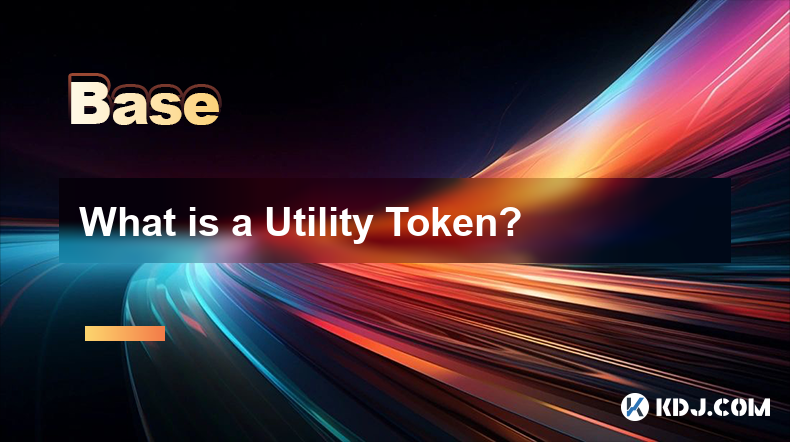
Key Points:
- Definition of a utility token
- Characteristics and functionality of utility tokens
- Types of utility tokens
- Benefits of using utility tokens
- Considerations for evaluating utility tokens
What is a Utility Token?
A utility token is a digital asset designed to serve a specific purpose within a particular ecosystem or platform. Unlike cryptocurrencies such as Bitcoin and Ethereum, which primarily function as mediums of exchange, utility tokens offer specific utilities and applications within their designated ecosystems.
Characteristics and Functionality of Utility Tokens
- Limited supply: Most utility tokens have a predefined and limited issuance, creating scarcity and potential value appreciation.
- Specific use cases: They are designed for specific purposes, such as accessing services, purchasing goods, or participating in governance decisions within their respective platforms.
- Non-transferable outside the platform: Utility tokens are typically restricted from being used outside their intended ecosystem, ensuring their utility remains within the platform's controlled environment.
- Interoperability: Many utility tokens are designed to be interoperable with other platforms or services, allowing users to transfer value and access multiple ecosystems.
Types of Utility Tokens
- App tokens: Provide access to and usage of specific decentralized applications (dApps).
- Security tokens: Represent fractionalized ownership of real-world assets, such as real estate or securities.
- Governance tokens: Grant holders voting rights and decision-making power in shaping the future development of a platform.
- Reward tokens: Distributed to users for contributions, participation, or other specific actions within an ecosystem.
- Payment tokens: Intended for use as a medium of exchange within a specific platform or group of merchants.
Benefits of Using Utility Tokens
- Enhanced usability: Provide additional functionality and utility within existing ecosystems, enhancing the user experience.
- Increased accessibility: Facilitate access to exclusive services, products, or governance decisions, which may be restricted to token holders.
- Community engagement: Encourage participation, incentivize contributions, and foster a sense of ownership among users.
- Value creation: Utility tokens can hold intrinsic value based on their utility and demand within their ecosystems, potentially generating returns for token holders.
Considerations for Evaluating Utility Tokens
- Platform stability and adoption: Assess the health, stability, and adoption rate of the underlying platform to determine the token's potential value and usability.
- Token economics: Examine the token supply, distribution, and utility to evaluate its potential for scarcity, value appreciation, and overall usability.
- Regulatory landscape: Consider potential regulatory implications and compliance requirements associated with utility tokens to mitigate risks.
- Team and roadmap: Research the team behind the platform and their vision, experience, and long-term plans, as these factors can influence the token's success.
- Competitors and market trends: Monitor the competitive landscape and identify market trends to assess the utility token's potential within the broader cryptocurrency ecosystem.
FAQs Related to Utility Tokens
Q: How do utility tokens differ from cryptocurrencies?
A: Utility tokens are distinct from cryptocurrencies as they serve specific purposes within their respective platforms and are primarily designed for use within these closed ecosystems.
Q: Are utility tokens a good investment?
A: The investment potential of utility tokens depends on the underlying platform's viability, token economics, and market demand. Thorough research and due diligence are crucial to making informed investment decisions.
Q: Can I use utility tokens outside their designated platforms?
A: Typically, utility tokens are restricted from being used outside their intended ecosystems due to their platform-specific functionality and the potential for misuse or fraud.
Q: How are utility tokens regulated?
A: Regulatory frameworks for utility tokens vary across jurisdictions. Some countries classify them as commodities, while others may subject them to securities regulation. It is essential to be aware of applicable regulations to ensure compliance.
Q: Is it possible to create my own utility token?
A: Yes, individuals or companies can create their own utility tokens by designing the token economics, establishing a platform or use case, and launching the token through a token generation event or specialized platforms.
Disclaimer:info@kdj.com
The information provided is not trading advice. kdj.com does not assume any responsibility for any investments made based on the information provided in this article. Cryptocurrencies are highly volatile and it is highly recommended that you invest with caution after thorough research!
If you believe that the content used on this website infringes your copyright, please contact us immediately (info@kdj.com) and we will delete it promptly.
- Cardano (ADA) Price Prediction: Enters Its Ninth Week of Sideways Price Action
- 2025-04-06 17:50:12
- Despite Trump's Tariff War, Bitcoin Recovers to $88,000 Before Slumping
- 2025-04-06 17:50:12
- Hut 8 (HUT) and Donald Trump's Sons Launch New Bitcoin Mining Firm Called American Bitcoin
- 2025-04-06 17:45:13
- Strategy Incorporated Expands Its Bitcoin Portfolio by Acquiring 22,048 BTC
- 2025-04-06 17:45:13
- ExoraPad Presale Shatters Expectations, Surpassing 100% of Its Initial Softcap Target
- 2025-04-06 17:40:15
- MicroStrategy Increases Its Bitcoin Holdings to About 2.5% of All Tokens
- 2025-04-06 17:40:15
Related knowledge
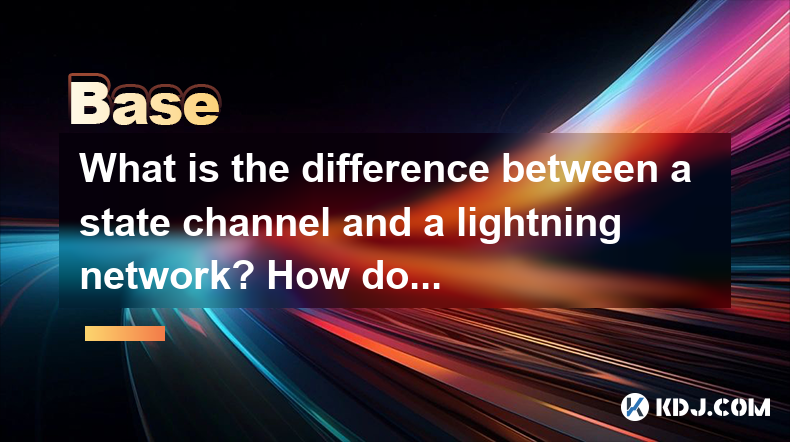
What is the difference between a state channel and a lightning network? How do they improve transaction efficiency?
Apr 05,2025 at 05:21pm
State channels and the Lightning Network are two significant technologies within the cryptocurrency ecosystem aimed at improving transaction efficiency on blockchain networks. Both solutions address the scalability issues of blockchain systems, particularly in handling a high volume of transactions quickly and with low fees. However, they operate differ...

Why is the oracle called the bridge between blockchain and the real world?
Apr 04,2025 at 04:00am
The concept of an oracle in the cryptocurrency and blockchain world is crucial for understanding how these decentralized systems interact with external data. The oracle is often referred to as the bridge between blockchain and the real world because it serves as a vital intermediary that fetches, verifies, and transmits off-chain data to the on-chain en...
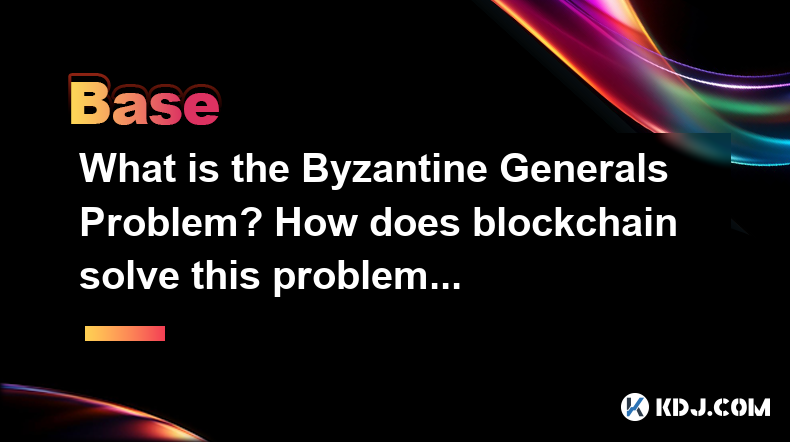
What is the Byzantine Generals Problem? How does blockchain solve this problem?
Apr 05,2025 at 06:29am
The Byzantine Generals Problem is a classic problem in the field of distributed computing and computer science, which has significant implications for the reliability and security of decentralized systems, including blockchain technology. This problem is named after a hypothetical scenario involving several generals of the Byzantine army who must coordi...
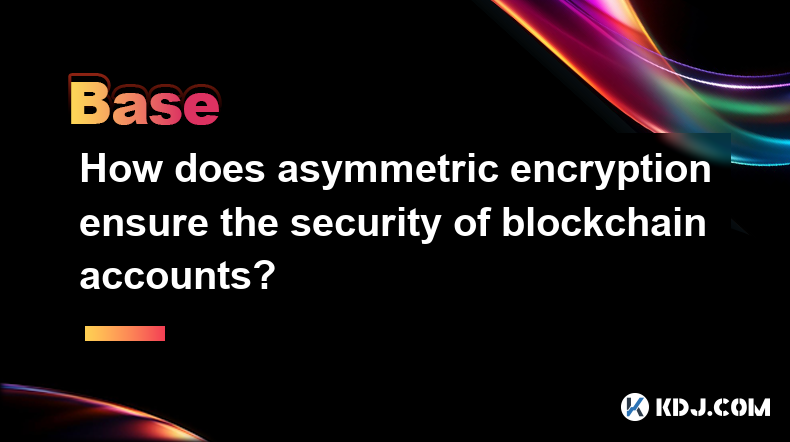
How does asymmetric encryption ensure the security of blockchain accounts?
Apr 06,2025 at 07:50am
Asymmetric encryption plays a critical role in securing blockchain accounts by providing a robust method of safeguarding private keys and ensuring secure transactions. This article delves into how asymmetric encryption works and why it is indispensable for the security of blockchain accounts. What is Asymmetric Encryption?Asymmetric encryption, also kno...

What role does the Merkle tree play in the blockchain? Why can it verify data integrity?
Apr 04,2025 at 01:29pm
The Merkle tree plays a crucial role in the blockchain, primarily due to its ability to efficiently and securely verify data integrity. This article will delve into the structure of a Merkle tree, its implementation in blockchain, and how it ensures the integrity of data. Understanding the Structure of a Merkle TreeA Merkle tree, also known as a hash tr...
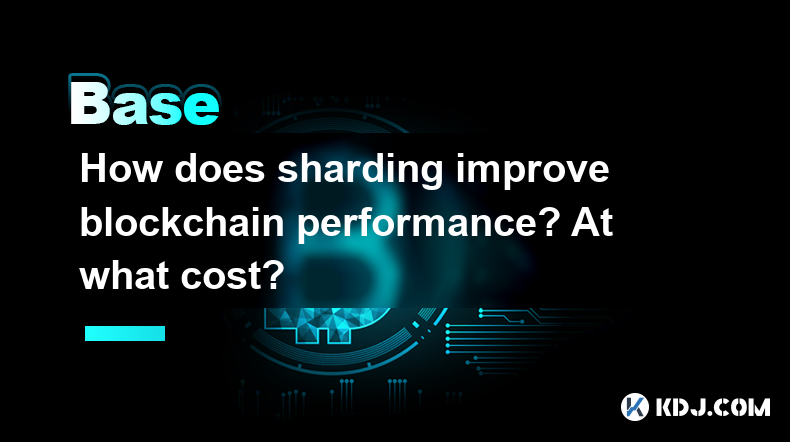
How does sharding improve blockchain performance? At what cost?
Apr 06,2025 at 04:00pm
Sharding is a technique used in blockchain technology to enhance the performance and scalability of a network. By dividing the blockchain into smaller, manageable pieces called shards, the system can process multiple transactions in parallel, significantly increasing throughput. However, this approach comes with its own set of challenges and costs. In t...

What is the difference between a state channel and a lightning network? How do they improve transaction efficiency?
Apr 05,2025 at 05:21pm
State channels and the Lightning Network are two significant technologies within the cryptocurrency ecosystem aimed at improving transaction efficiency on blockchain networks. Both solutions address the scalability issues of blockchain systems, particularly in handling a high volume of transactions quickly and with low fees. However, they operate differ...

Why is the oracle called the bridge between blockchain and the real world?
Apr 04,2025 at 04:00am
The concept of an oracle in the cryptocurrency and blockchain world is crucial for understanding how these decentralized systems interact with external data. The oracle is often referred to as the bridge between blockchain and the real world because it serves as a vital intermediary that fetches, verifies, and transmits off-chain data to the on-chain en...

What is the Byzantine Generals Problem? How does blockchain solve this problem?
Apr 05,2025 at 06:29am
The Byzantine Generals Problem is a classic problem in the field of distributed computing and computer science, which has significant implications for the reliability and security of decentralized systems, including blockchain technology. This problem is named after a hypothetical scenario involving several generals of the Byzantine army who must coordi...

How does asymmetric encryption ensure the security of blockchain accounts?
Apr 06,2025 at 07:50am
Asymmetric encryption plays a critical role in securing blockchain accounts by providing a robust method of safeguarding private keys and ensuring secure transactions. This article delves into how asymmetric encryption works and why it is indispensable for the security of blockchain accounts. What is Asymmetric Encryption?Asymmetric encryption, also kno...

What role does the Merkle tree play in the blockchain? Why can it verify data integrity?
Apr 04,2025 at 01:29pm
The Merkle tree plays a crucial role in the blockchain, primarily due to its ability to efficiently and securely verify data integrity. This article will delve into the structure of a Merkle tree, its implementation in blockchain, and how it ensures the integrity of data. Understanding the Structure of a Merkle TreeA Merkle tree, also known as a hash tr...

How does sharding improve blockchain performance? At what cost?
Apr 06,2025 at 04:00pm
Sharding is a technique used in blockchain technology to enhance the performance and scalability of a network. By dividing the blockchain into smaller, manageable pieces called shards, the system can process multiple transactions in parallel, significantly increasing throughput. However, this approach comes with its own set of challenges and costs. In t...
See all articles




















































































